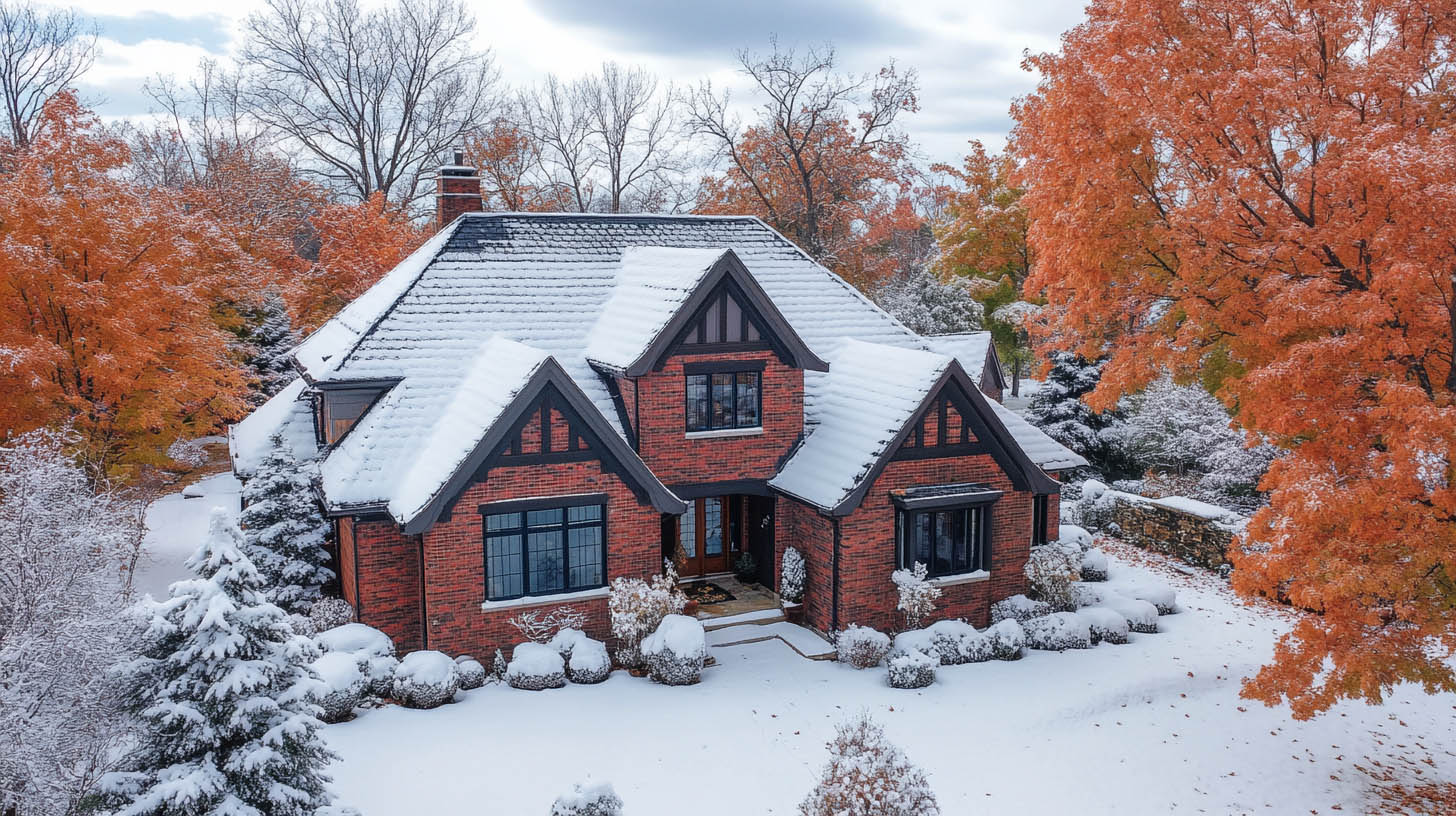
Rainstoppers Roofing in Charleston, WV, provides expert roofing solutions tailored for harsh winter climates. Choosing the right roofing material is crucial for maintaining durability and safety in areas prone to heavy snow, ice, and fluctuating temperatures.
Top Roofing Materials for Winter Durability
1. Metal Roofs
Metal roofs are an excellent choice for winter climates due to their durability and snow-shedding ability. The smooth, non-porous surface of metal roofs prevents snow accumulation and allows ice to slide off easily, minimizing the risk of roof collapse. Additionally, metal roofs are highly resistant to temperature fluctuations, which helps reduce heat loss.
- Pros: Long lifespan, energy-efficient, sheds snow easily
- Cons: Can require snow guards to prevent large sheets of snow from sliding off at once
2. Concrete Tile Roofs
Concrete tiles are an excellent choice for roofs in regions with harsh winter conditions. Known for their exceptional strength and durability, these tiles resist erosion and can endure prolonged exposure to snow, ice, and freezing temperatures without compromising their integrity. Their natural insulating properties help regulate attic temperatures, reducing the likelihood of ice dam formation—a common cause of water infiltration and structural damage. Additionally, concrete tiles offer long-lasting performance and require minimal maintenance, making them a reliable and cost-effective option for homeowners in colder climates.
- Pros: Erosion-resistant, naturally insulative, highly durable
- Cons: Higher initial cost due to material and installation
3. Asphalt Shingle Roofs
Asphalt shingles are an affordable and practical roofing option widely used in colder climates. These shingles are specifically designed to endure harsh conditions such as snow, ice, and strong winds. While they offer reliable protection, regular maintenance is essential to preserve their waterproofing and prevent potential wear over time. Although asphalt shingles are durable, their lifespan is generally shorter compared to more robust materials like metal or concrete, making them an excellent choice for homeowners balancing cost and performance.
- Pros: Affordable, good wind and weather resistance
- Cons: May require maintenance, shorter lifespan (20–40 years)
Interesting Fact: Metal roofs reflect up to 70% of solar heat, making them a top choice for energy efficiency in cold climates.
Maintenance Tips for Winter Roofing Materials
- Install Snow Guards on Metal Roofs: These accessories help control snow sliding and prevent sudden snow falls that can be dangerous.
- Regular Inspections: Inspecting your roof twice a year, especially after winter, can help catch early signs of wear or damage.
- Clear Debris: Remove any branches or debris to avoid accumulation that could trap moisture.
FAQs
Which roofing material is the best overall for snowy regions?
Metal roofs are often preferred for snowy regions due to their snow-shedding properties and long lifespan.
Are concrete tiles too heavy for most buildings?
Concrete tiles are heavier than other materials, so the structure must be evaluated to ensure it can support the added weight.
How can I maximize the lifespan of my asphalt shingle roof in a snowy climate?
Regular maintenance, including annual inspections and applying waterproofing treatments, can extend the life of an asphalt shingle roof.For more information on weather-resistant roofing options, view our guide on why roof flashing is critical for preventing water damage.
